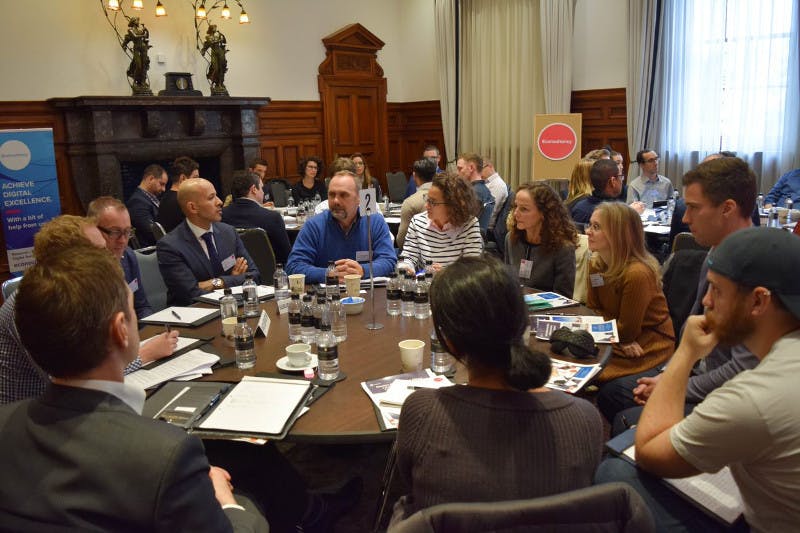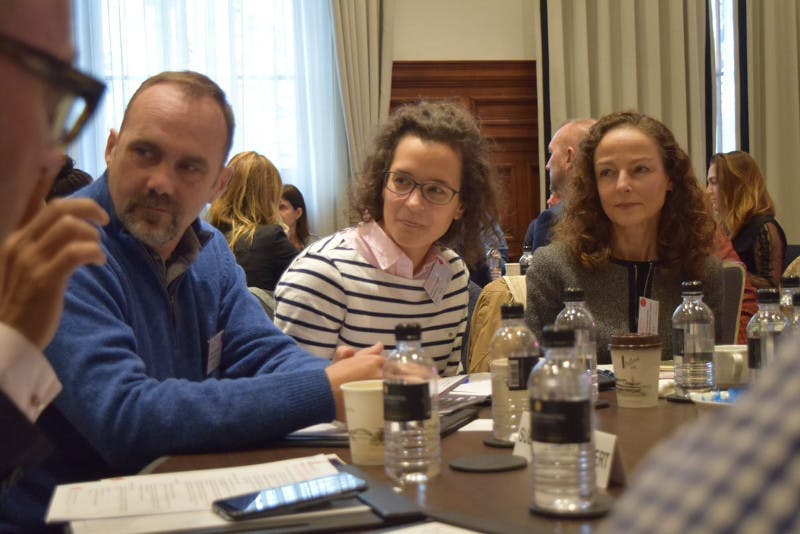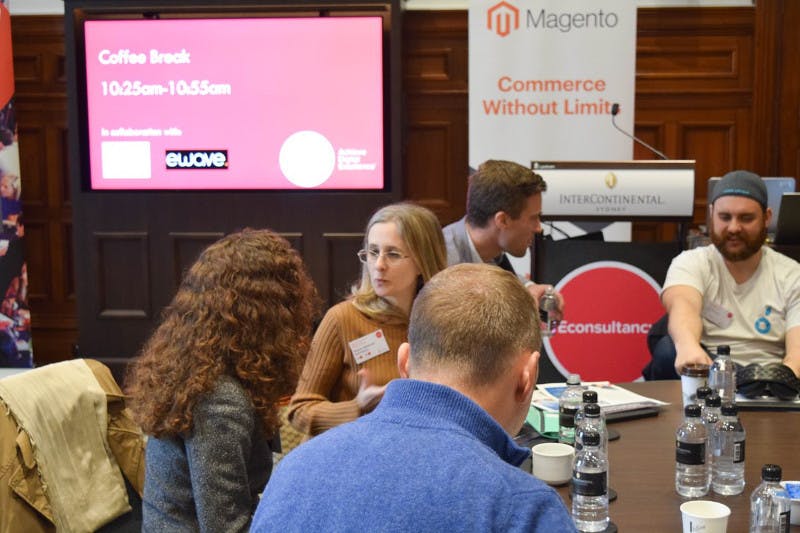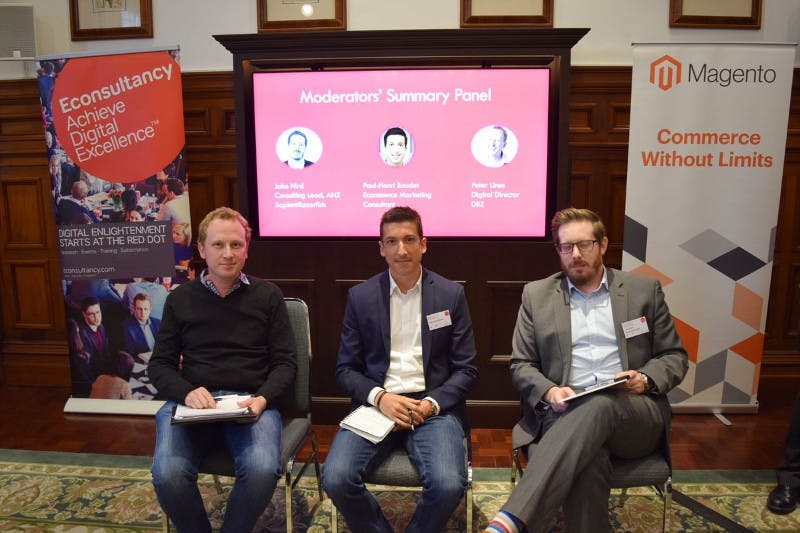Because of its importance, Econsultancy has covered CRO extensively over the past few years (with articles from practitioners such as Paul Rouke) and has published an annual survey and report in assocation with RedEye on the state of the art.
Yet as technology develops and customer expectations grow, CRO techniques change as well. So what are the trends which are driving CRO in 2018?
To find out, Econsultancy recently held an event in Sydney in association with Magento and eWave and we asked dozens of client-side marketers to give us an update on how CRO is changing.
Table moderators Jake Hird, Consulting Lead (ANZ, SapientRazorfish), Paul-Henri Boudet, Ecommerce Marketing Consultant, and Peter Lines, Digital Director (DBZ) led the discussions, highlights of which are summarized below.
For those interested in CRO, Econsultancy will be hosting roundtable discussions on the topic in Bangkok on July 10th and in Mumbai on July 12th. Senior client-side marketer interested in joining at these locations should click on the appropriate link and request a seat at the table!
1) CRO practitioners have an expanded role
Some attendees felt that CRO was going ‘back to basics’ and they were spending their time re-examining standard ecommerce site components such as product titles, content descriptions, and buttons. Others, however, said that because of a trend toward website personalisation, CRO specialists needed to work on optimising the overall customer experience, as well.
Supporting this view, several participants indicated that, at their organisations, transactions are no longer the only event considered a conversion because immediate results are ‘not necessarily an indicator of long-term value.’
As a result, CRO techniques are now being used to optimize ‘points of engagement’ on websites as well as what is traditionally thought of as a conversion.

2) Data requirements are increasing
One participant described CRO specialists as ‘detectives’ looking for issues and solutions. Because of this designation, CRO practitioners now need all available customer data to do their job. This includes 1st and 3rd party data as well as customer and industry benchmarks which help them learn from other industries and organisations.
Yet CRO specialists still have a specific job to do, another noted, and that is to improve business results on their website. Doing so remains difficult as few companies have the data necessary for a single view of the customer.
The main reason why obtaining a single-customer view is still a challenge is that customer data is siloed because of
- Conversion channels – Marketers lack solutions to sync offline with online data
- Technology – CRO specialists cannot find the right vendor to solve all the business use cases
- Business units – Marketing, customer service and ecommerce teams all have customer data but it isn’t always shared with those tasked with CRO.
Attendees were hopeful that artificial intelligence (AI) solutions may eventually help CRO practitioners join up and make sense of the complicated, cross-channel data necessary to do their job.

3) Attribution is still a major problem
Attributing a conversion to marketing channels is a key requirement of CRO, yet most attendees indicated that they were still struggling in this area.
Some, who work for pure-play ecommerce companies, indicated that they were making progress with attribution modeling. Others, such as those from omnichannel retailers, said that attribution has become political at their organisations and, as a result, there were different KPIs for online and offline channels.
For those focusing on online conversion, last click attribution is still the most widely-used model but attendees agreed that it is not ideal. One participant pointed out that CRO specialists are aware of the limitations of the model (i.e. that it doesn’t take into account any of the previous consumer touchpoints), but they are still not sure how to address the issue.
B2B marketers indicated that they face additional challenges as they have less data to work with than B2C marketers and that they often suffered from inaccurate data for real-world customer interactions (e.g. sales reps have multiple meetings with one prospect and not properly recording the interactions).

4) Testing is gaining traction
Participants said that optimising using A/B testing was now very-well understood among CRO practitioners and that it is being used extensively. One outstanding issue, though, is that A/B tests are not always conclusive as the performance of the ‘B’ variation is often similar to the original ‘A’.
Others pointed out that their companies lack a unified testing methodology across the business. This has reduced the amount of time, resources and budget allocated for A/B tests and impacted their ability to optimize across the site.
Attendees agreed, though, that there have been positive changes at companies with regards to CRO. They indicated that a ‘test and learn’ approach is now a fundamental part of ecommerce and said that the next step is to extend the optimisation mindset across the rest of the business.
A word of thanks
Econsultancy would like to thank the event sponsors, Magento and eWave, our table moderators, Jake Hird, Consulting Lead (ANZ, SapientRazorfish), Paul-Henri Boudet, Ecommerce Marketing Consultant, and Peter Lines, Digital Director (DBZ) for helping with the discussions and the marketers who provided valuable insights into the current state of conversion rate optimisation.
We hope to see you all at future Econsultancy events!


Comments